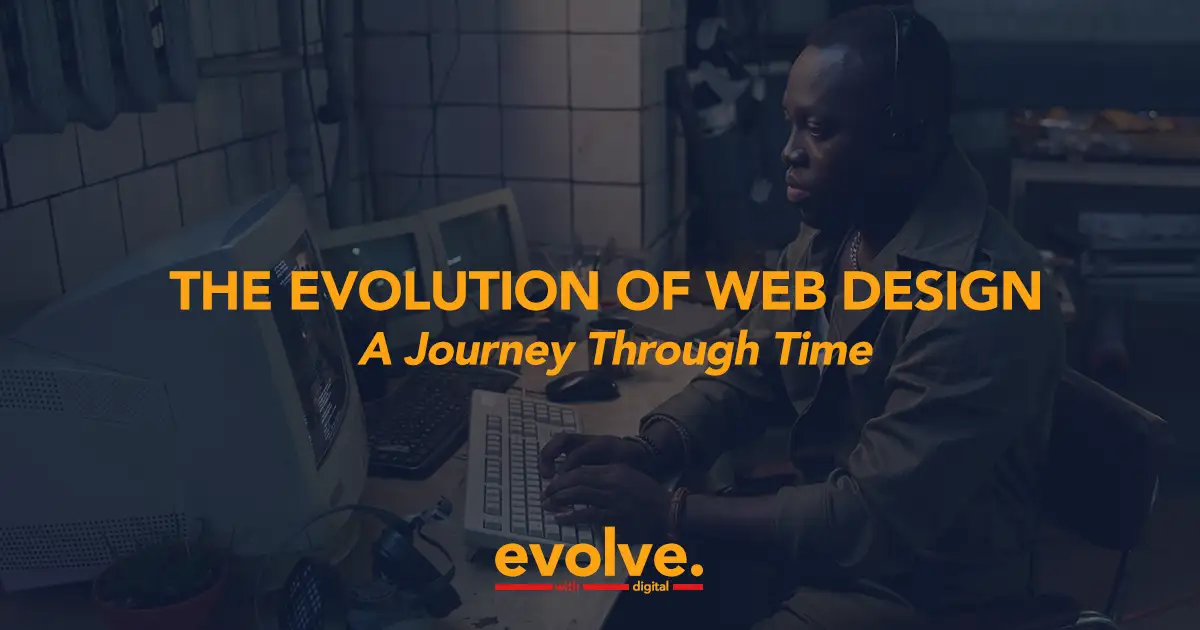
In the early days of the internet, websites were simple, often consisting of just text and hyperlinks. Design was minimal, as the focus was on functionality rather than aesthetics. As technology advanced and the internet became more accessible, web design evolved dramatically, reflecting changing trends, user expectations, and technological capabilities.
The Birth of the Web: Simple Beginnings
The World Wide Web was born in 1989, and the first website was created by Tim Berners-Lee in 1991. This website was purely text-based, with hyperlinks to other pages. Design was not a consideration at this stage, as the web was primarily used for sharing information.
The Rise of HTML and Tables
In the early 1990s, HTML (Hypertext Markup Language) emerged as the standard language for creating web pages. Tables were commonly used for layout, leading to the creation of more structured and visually appealing websites. However, these designs were still basic compared to modern standards.
The Dot-Com Boom: The Emergence of Flash and GIFs
The late 1990s saw the rise of the dot-com boom, with businesses rushing to establish an online presence. This era saw the emergence of Flash and animated GIFs, which were used to create more dynamic and interactive websites. Designers began experimenting with more complex layouts and visual effects.
Investors were eager to capitalize on the growing popularity of the internet, leading to inflated valuations of many companies, even those with little or no profit. This speculative frenzy eventually burst in the early 2000s, resulting in the collapse of many internet companies and billions of dollars in losses for investors.
The dot-com bubble serves as a cautionary tale about the dangers of irrational exuberance and the importance of evaluating investments based on fundamentals rather than hype.
Adobe officially announced the end of support for Flash Player on December 31, 2020. This marked the retirement of Flash, as Adobe no longer provides updates, including security updates, for Flash Player. Flash content is no longer supported in web browsers, and most major browsers have disabled Flash Player plugin functionality.
The Web 2.0 Revolution: User-Centered Design
The early 2000s brought about the concept of Web 2.0, which focused on user-generated content and collaboration.
The Web 2.0 revolution marked a significant shift in how websites were designed and used. User-centered design became a key principle, emphasizing the importance of understanding user needs and preferences. Websites began to focus more on usability, with intuitive interfaces and clear navigation paths. Accessibility also became a priority, with designers striving to ensure that websites were usable by people of all abilities.
One of the key technologies that enabled this shift was Cascading Style Sheets (CSS). CSS allowed designers to separate the presentation of a website from its content, making it easier to create visually appealing designs that were also flexible and adaptable. This led to a wave of innovation in web design, with designers experimenting with new layouts, typography, and visual elements.
The Mobile Revolution: Responsive Design
With the advent of smartphones and tablets, web design had to adapt to accommodate various screen sizes and devices. Responsive design became the norm, ensuring that websites could adapt seamlessly to different screen sizes. This marked a shift towards simpler, more streamlined designs that prioritized mobile users.
Modern Web Design: Flat Design and Beyond
Today, web design is characterized by simplicity and minimalism. Flat design, which eschews skeuomorphic elements in favor of clean, simple visuals, has become popular. Designers are also incorporating more multimedia elements, such as videos and animations, to create more engaging experiences.
The Future of Web Design: AI and Beyond
Looking ahead, the future of web design is likely to be shaped by advancements in technology such as AI (Artificial Intelligence) and machine learning. These technologies have the potential to revolutionize web design by offering personalized, adaptive experiences based on user behavior and preferences.
Bonus Content
If you decided to stick around, here is the list of some of the oldest websites that are still running.
1. IT Corp – launched in 1986 – link.
2. Vortex Technology – launched in 1986 – link.
3. Caine, Farber & Gordon – launched in 1987 – link.
4. ACME – launched in 1991 – link.
5. ALIWEB – launched in 1994 – link.
Next
Why Landscaping Businesses Need a Website: A Digital Presence for Growth – read here.
SEO vs. Advertising: The Difference & Pros and Cons – read here.
More Links
Check out our Web Design Chicago agency here.
Grow Local & Map SEO with Evolve – click here.


